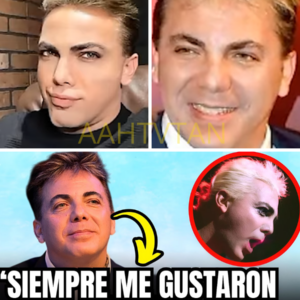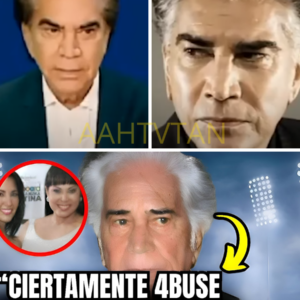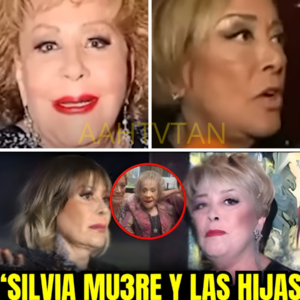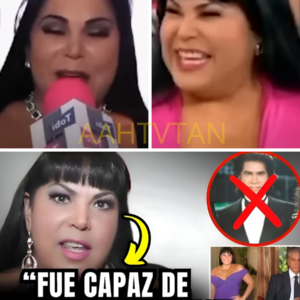El escándalo detrás de la película It Ends With Us Continúa: Justin Baldoni Responde
This extended version of the story provides an in-depth look at the ongoing legal dispute between actors Blake Lively and Justin Baldoni, which revolves around serious accusations made by Lively regarding her treatment during the production of the film It Ends With Us. The legal battle has gained considerable attention and fueled a media frenzy, highlighting the complexities of celebrity culture, public perception, and the power dynamics that exist in Hollywood. Here’s a more detailed breakdown of the situation:

Blake Lively has made serious claims of sexual harassment, mistreatment, and discrimination against Justin Baldoni, which she alleges occurred during the filming of It Ends With Us. She accuses Baldoni of crossing personal boundaries, both physically and emotionally, and describes incidents of harassment that she says made her feel unsafe and objectified on set. Lively’s allegations also include accusations of body shaming, claiming that Baldoni made disparaging remarks about her physical appearance, particularly her weight. This was presented by her legal team as evidence of the toxic work environment on the set.
Beyond the claims of inappropriate behavior, Lively also asserts that Baldoni orchestrated a smear campaign against her, using a high-profile public relations firm to manipulate media narratives and turn public opinion against her. According to Lively, the firm was hired to spread false stories about her behavior and personal life, tarnishing her reputation. The actress maintains that these actions were a form of retaliation for her refusal to tolerate Baldoni’s behavior, making the environment on set even more hostile.
In stark contrast, Justin Baldoni has vehemently denied all allegations made by Lively. He has described the accusations as unfounded, inflammatory, and completely false. Baldoni claims that he is the true victim in this situation, having been unjustly attacked and vilified in the media. He argues that the accusations made by Lively are part of a larger effort to damage his reputation, and he insists that Lively has misrepresented the events that took place on set. He has also filed a lawsuit against the New York Times, which published an article detailing Lively’s claims, alleging that the newspaper failed to present a balanced view of the situation. According to Baldoni’s legal team, the article was biased and published without giving him the opportunity to respond fully to the accusations.
This legal battle has taken a more contentious turn as Baldoni seeks $250 million in damages for defamation, claiming that the false narrative surrounding the New York Times article has caused irreparable harm to his career and personal life. Baldoni argues that the media, in their rush to cover the story, have disproportionately sided with Lively’s version of events, making it impossible for him to defend himself against the mounting accusations. He further contends that this media bias has led to a public perception that he is guilty of the crimes he has been accused of, and that he deserves compensation for the damage done to his reputation.
In response to these mounting allegations, Blake Lively and her legal team stand by their claims, asserting that Lively is a victim of a hostile and exploitative work environment, and that her actions were simply an attempt to protect herself from further harm. They argue that Baldoni’s denial of the accusations is part of a broader pattern of deflection, designed to avoid accountability for his actions. Lively has promised to present further evidence in court, which could include detailed accounts of her experiences on set, along with testimony from other cast and crew members who may corroborate her story.
The situation has been complicated by accusations that both sides have used the media to their advantage, with public relations teams on both sides allegedly working behind the scenes to manipulate public opinion. Baldoni’s team has claimed that Lively’s legal representation has leaked information to the press in order to sway public sentiment in her favor. The New York Times article, in particular, is seen as a turning point in this media battle, as it focused almost exclusively on Lively’s perspective without allowing Baldoni the chance to tell his side of the story. According to Baldoni’s legal team, the article was not only misleading but also inflammatory, contributing to the damage to his public image.
One of the most contentious elements of the case is the use of technology and text messages, with both parties accusing each other of manipulating conversations and presenting messages out of context. For example, an emoji used in a conversation between the two has become a focal point in the case, with Lively’s team claiming it was part of a broader pattern of inappropriate and flirtatious behavior, while Baldoni’s team argues that the emoji was misinterpreted and not intended in the way Lively suggests.
As the case progresses, it has sparked broader conversations about the role of the media in shaping public opinion and the power dynamics that exist within Hollywood. The celebrity culture that both Lively and Baldoni inhabit often operates in a space where public perception can make or break careers, and both sides are aware of the high stakes involved in this legal battle. The outcome of the case remains uncertain, with both parties preparing for additional legal proceedings, including potential lawsuits and counterclaims.
The conflict has had a far-reaching impact, drawing in fans, industry professionals, and media outlets, all of whom are eager to see how this high-profile legal case will unfold. It also raises important questions about the responsibilities of actors, directors, and producers in maintaining respectful work environments and how those who face accusations can best navigate the intense scrutiny that comes with being in the public eye. As the legal proceedings continue, it seems that the situation will only grow more complicated, with both Lively and Baldoni determined to prove their innocence and protect their professional reputations.
In conclusion, the legal dispute between Blake Lively and Justin Baldoni over the making of It Ends With Us is a complex and multifaceted case that involves allegations of harassment, discrimination, defamation, and media manipulation. The story is far from over, and both sides are preparing for a protracted battle in court, with each accusing the other of serious misconduct. The case has garnered significant media attention and will likely continue to dominate the headlines as it moves through the legal system.
News
La Esposa De Leo Dan A Sus 74 Años Finalmente Confesó La Oscura Verdad Dejándonos Perplejos
La Verdad Oculta de Marieta: La Esposa de Leo Dan Rompe el Silencio A lo largo de los años, la figura de Leo Dan ha sido sinónimo de éxito, romance y música inolvidable. Sin embargo, detrás de su impecable carrera…
Guillermo Dávila Tiene 69 Años, Ahora Su Esposa Confesó La Oscura Verdad Que Todos Hemos Sospechado
El impacto de las redes sociales en la sociedad moderna En los últimos años, las redes sociales han revolucionado la forma en que nos comunicamos, interactuamos y consumimos información. Plataformas como Facebook, Instagram, Twitter, TikTok y LinkedIn han transformado nuestras…
A Los 50 Años, Cristian Castro Finalmente Confirmó La Verdad Más Vergonzosa De Su Vida 
La Caída de una Leyenda: El Escándalo Familiar de José Luis Rodríguez “El Puma” En los pasillos del espectáculo latinoamericano, pocas figuras han despertado tanto interés, controversia y admiración como José Luis Rodríguez, conocido mundialmente como “El Puma”. Este ícono…
 A Sus 81 Años, JOSÉ LUIS RODRÍGUEZ EL PUMA Confirmo Lo Que Todos Hemos Sospechado
A Sus 81 Años, JOSÉ LUIS RODRÍGUEZ EL PUMA Confirmo Lo Que Todos Hemos Sospechado
La Caída de una Leyenda: El Escándalo Familiar de José Luis Rodríguez “El Puma” Venezuela está ardiendo, y el epicentro de este terremoto mediático tiene un nombre que resuena en cada rincón: José Luis Rodríguez, “El Puma”. Reconocido como una…
A Semanas De La Partida De Silvia Pinal Sus Hijos Revelaron La Verdad De Su Trágica Relación
El Escándalo Más Impactante: Conflictos Familiares en el Clan Guzmán-Pinal El espectáculo mexicano no sería lo mismo sin los controversiales episodios que rodean a la familia Guzmán-Pinal-Pasquel, y este año no ha sido la excepción. En el centro de un…
A Los 57 años, Liliana Rodríguez Por Fin Confirmó La Oscura Verdad Dejándonos Perplejos
Liliana Rodríguez, a renowned Venezuelan actress and singer, is making headlines for a much more personal reason than her illustrious career. At 57, Liliana, daughter of the famous singer José Luis Rodríguez, known as El Puma, and the unforgettable vedette…
End of content
No more pages to load











